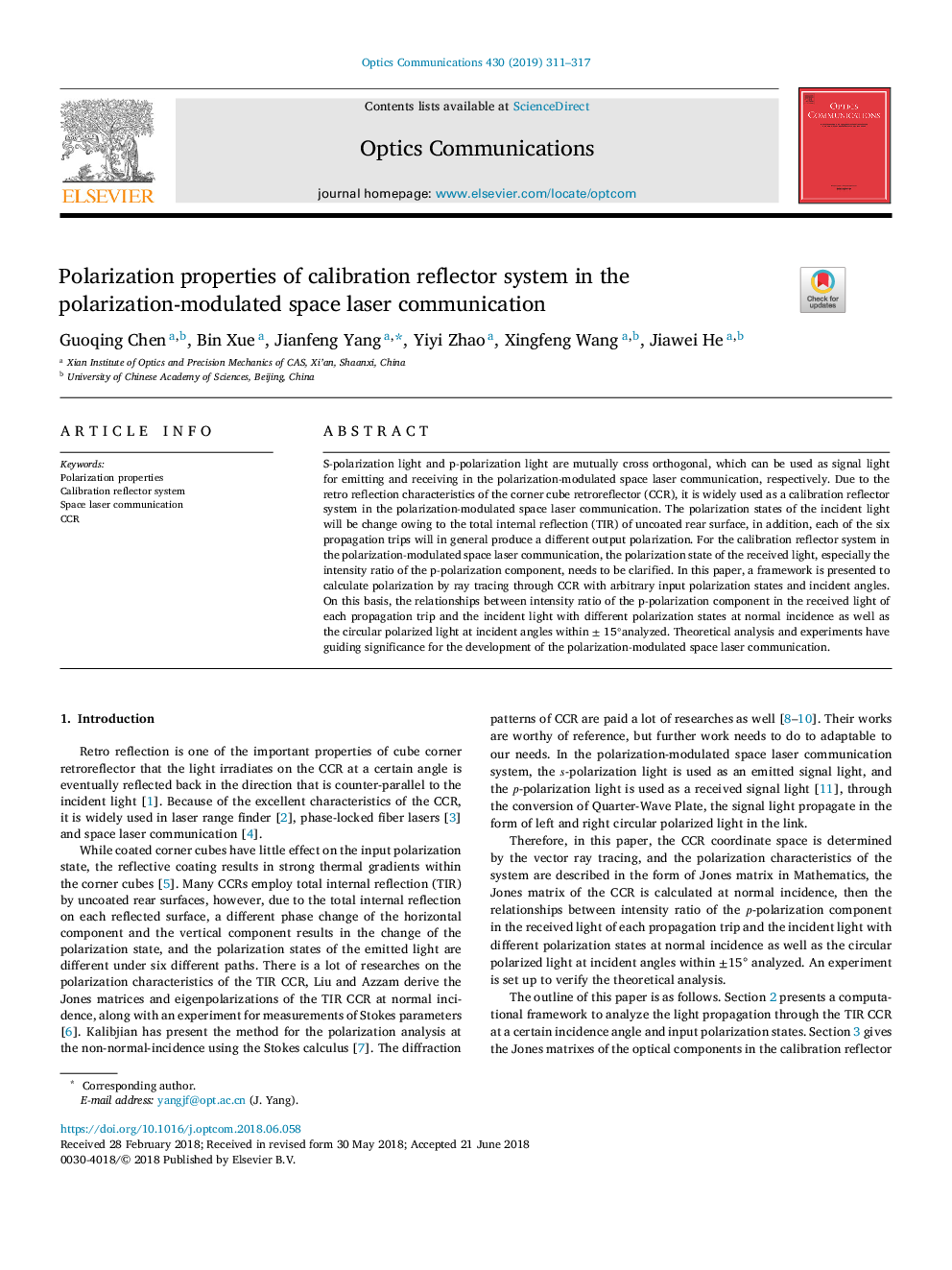| Article ID | Journal | Published Year | Pages | File Type |
|---|---|---|---|---|
| 10135673 | Optics Communications | 2019 | 7 Pages |
Abstract
S-polarization light and p-polarization light are mutually cross orthogonal, which can be used as signal light for emitting and receiving in the polarization-modulated space laser communication, respectively. Due to the retro reflection characteristics of the corner cube retroreflector (CCR), it is widely used as a calibration reflector system in the polarization-modulated space laser communication. The polarization states of the incident light will be change owing to the total internal reflection (TIR) of uncoated rear surface, in addition, each of the six propagation trips will in general produce a different output polarization. For the calibration reflector system in the polarization-modulated space laser communication, the polarization state of the received light, especially the intensity ratio of the p-polarization component, needs to be clarified. In this paper, a framework is presented to calculate polarization by ray tracing through CCR with arbitrary input polarization states and incident angles. On this basis, the relationships between intensity ratio of the p-polarization component in the received light of each propagation trip and the incident light with different polarization states at normal incidence as well as the circular polarized light at incident angles within ± 15°analyzed. Theoretical analysis and experiments have guiding significance for the development of the polarization-modulated space laser communication.
Related Topics
Physical Sciences and Engineering
Materials Science
Electronic, Optical and Magnetic Materials
Authors
Guoqing Chen, Bin Xue, Jianfeng Yang, Yiyi Zhao, Xingfeng Wang, Jiawei He,
